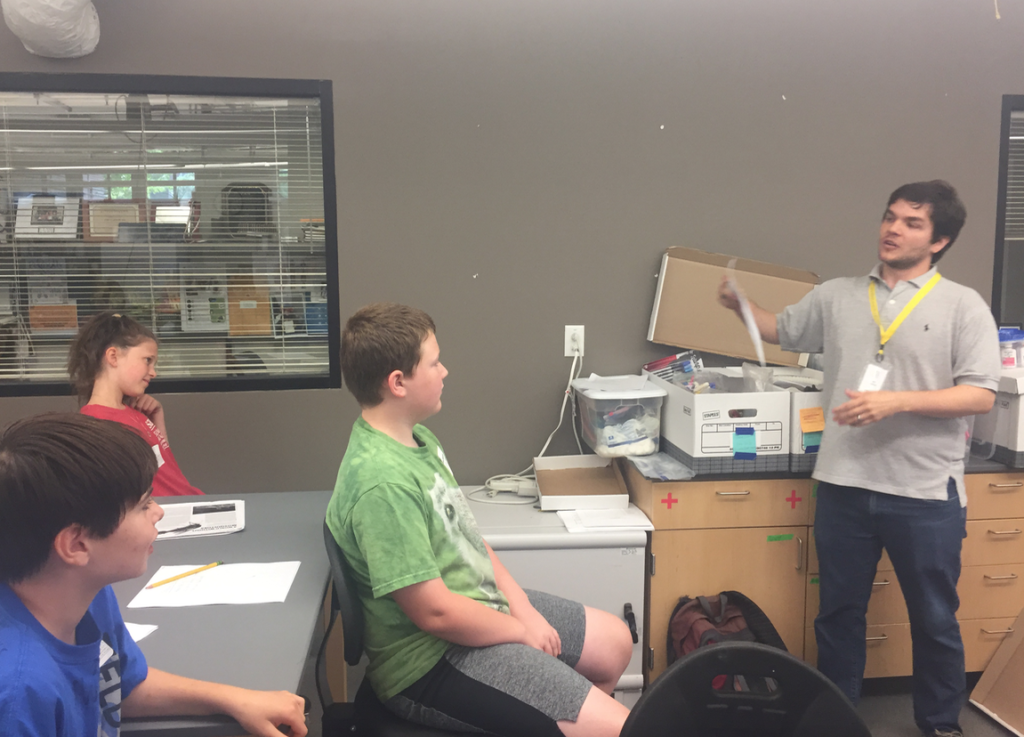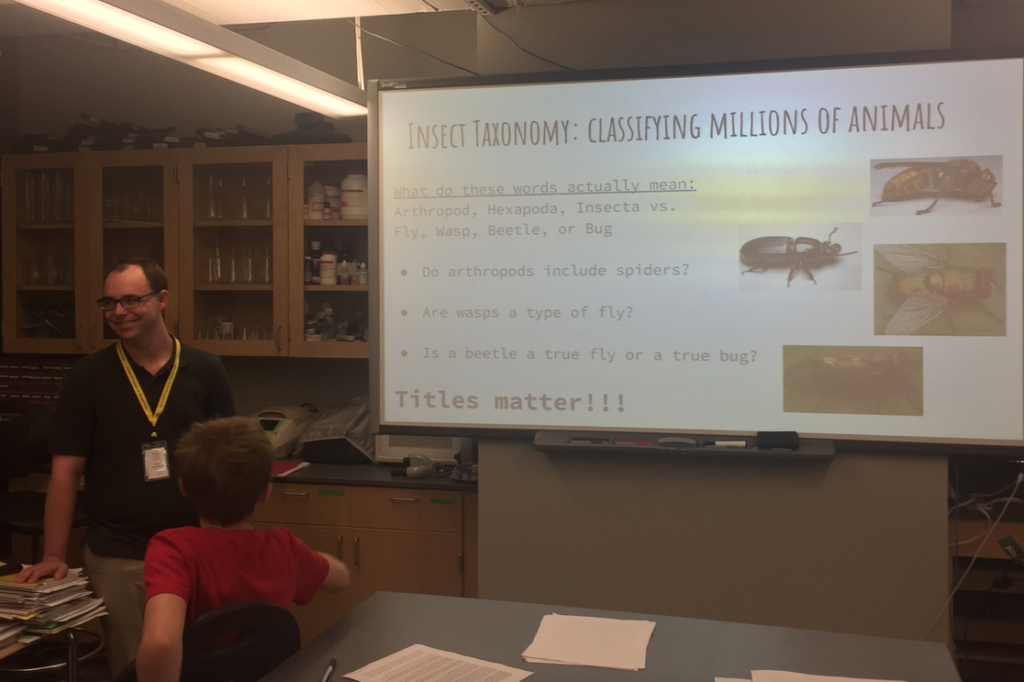Summer SAVY 2018: Session 6, Day 2 – Field Ecology (Rising 5th/6th)
Dear Parents,
Everyday this week is covering a different range of biological diversity! Today your children learned about the bugs and birds in the world around us. Both insects and birds play huge roles in ecology. Your children read scientific literature and became scientific advisors for a leading mosquito control company. They learned about the pros and cons regarding mosquito eradication and developed plans to pitch to the board of directors (a.k.a. the instructors). Their proposals included recognition of the complex interactions between insects and other parts of our environment, and discussion about the feasibility of their proposals. We heard ideas such as genetic modification, bacterial suppression of insects, and targeted eradication of only disease-causing mosquitos.
Our students also learned about the plethora of insect diversity in our world and how to identify some of the most common ones using their morphology. They used dissecting microscopes to observe the detailed structures of insect bodies and distinguish bees, wasps, flies, beetles, bugs, among others. We also went on a field trip to see insects in their native habitats. They overcame their yuck factor in the name of science!
Many of our students really enjoyed learning about insect diversity. There are a variety of ways that they can continue to learn from observing and collecting insects in your back yard. We recommend using websites like www.bugguide.com to identify insects based on pictures and www.insectidentification.org to identify them using dichotomous keys. There are also efforts such as the Bumble Bee Watch that ask citizen scientists to track insect frequency for conservation efforts.
We then closed out the day with a lesson on bird’s role in our world. We talked about their morphology and how they use their beaks to eat a ton of different things. Their song is also really critical to their survival and can be used to defend territory and to attract mates. Your children learned how to translate bird songs into mnemonics and, with practice, should be able to identify these songs in the wild.
As with insects, there are many resources that you can access to continue their interests from home. The Cornell Lab of Ornithology website includes incredible resources for bird identification through both pictures and songs. This website also includes many detailed descriptions about how birds interact in their environment. You can also find local birding locations and groups that share your child’s interests here.
We hope your children enjoy the rest of the week
– The insect and bird duo (Dylan Shropshire and Teddy van Opstal)
Photos From Our Day

